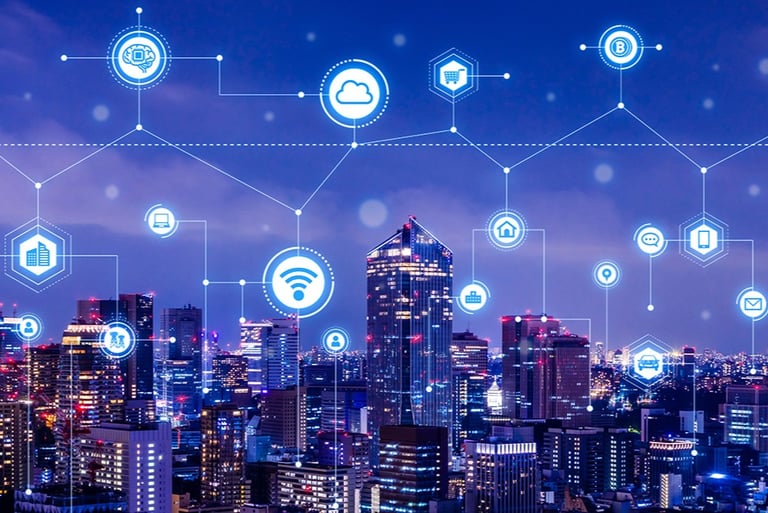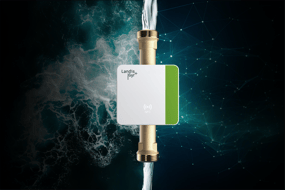 The communication technology landscape for AMI and smart grids is rapidly evolving, with a rise in Radio Frequency (RF) mesh networks due to their reliability and long-range capabilities. This agility is crucial for finding and capitalizing on new opportunities while providing stable and sustainable energy supply. But what is the best technology for the increasingly demanding digitalization of energy grids?
The communication technology landscape for AMI and smart grids is rapidly evolving, with a rise in Radio Frequency (RF) mesh networks due to their reliability and long-range capabilities. This agility is crucial for finding and capitalizing on new opportunities while providing stable and sustainable energy supply. But what is the best technology for the increasingly demanding digitalization of energy grids?
NB-IoT - a true enabler for the Internet of Things
The adoption of NB-IoT technology has been extremely fast. NB-IoT is an LPWAN (Low Power Wide Area Network) technology based on the existing 4G/LTE communication network. It is standardized by the global 3GPP standards organization, an initiative uniting several telecommunications standard development organizations. The reason why NB-IoT is seen as so interesting is because it is considered to be the true standardized enabler of the Internet of Things. It advances the digitalization of the grid by allowing the connection of a massive number of various devices into a single network in a cost-efficient and reliable way.
Cost-efficiency combined with reliability
From a smart metering point of view, NB-IoT can be utilized in various geographical environments, operating reliably in different field conditions. n urban areas, the 4G/LTE network coverage is great and allows the deployment of many NB-IoT endpoints. In addition, security is highly considered in NB-IoT technology, as it utilizes the same security procedures as in any other 4G/LTE mobile communications. This, of course, extends the device's operation life span, decreases the cost of energy used, and can also lower the cost of peripheral hardware, including power supply and super capacitor.
High reliability:
NB-IoT operates on standardized frequency bands (such as LTE800 MHz), offering a controlled environment for radio communication. NB-IoT devices are completely independent of other devices in the field, which is not the case with all repeating technologies, like RF (Radio Frequency) Mesh or PLC. Since it does not require any data concentrators or gateway devices, its signal reception and thus SLA level remain stable – this also reduces maintenance costs for the smart metering operator. NB-IoT communication operates on the same networks as common mobile devices, and they are typically maintained by telecom operators who have a strong interest in guaranteeing high availability for communication. Telecom operators can also manage the volume of services using the NB-IoT frequency band to maintain the high reception. Compared to, for example, LTE Cat-1, the NB-IoT has far better max. coupling loss (MCL) which also indicates communication reliability.
Cost-efficiency:
Communication costs for NB-IoT consist mostly of subscription costs and modem HW costs. Utilizing NB-IoT technology together with eUICC (Embedded Universal Integrated Circuit Card) technology, which is introduced simultaneously with NB-IoT, makes NB-IoT a very cost-efficient technology. With eUICC, the service provider can be changed remotely without touching the meter or changing the traditional physical SIM card. This minimizes the amount of field work and lowers the subscription management costs. It’s good to be aware of extra costs that might arise due to the creation of eUICC: a totally new business ecosystem will emerge around hosting and managing subscriptions. However, in the future, NB-IoT network costs are expected to decrease radically due to economies of scale: the technology will be widely used all over the world, and since it’s based on open standards, the number of vendors and other players offering NB-IoT devices and solutions will increase, and the increased competition will, in turn, result in lower prices.
What is the best communication technology for AMI?
LTE NB-IoT is a powerful addition to the wide selection of AMI communication technologies. But as always, there are some viewpoints that utilities should consider when it comes to NB-IoT. For example, ICG metering requires higher data throughput, and some applications, such as grid-load balancing operations, require near real-time latencies. These might pose challenges for NB-IoT technology.
When utilities select the communication technology for their AMI infrastructure, there is one guideline they should follow when making the decision: The communication solution should always be built case-by-case, based on the various field conditions of the utility. Looking ahead, we anticipate a surge in the adoption of hybrid networks, which seamlessly integrate a diverse range of communication methods ranging from G3 PLC, RF Mesh and NB-IoT or another LTE technology forming a balanced communication mix.





